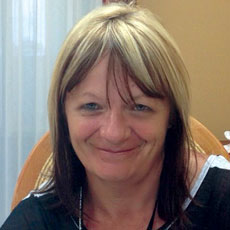
As a fellow long-term care professional, you have no doubt experienced a similar situation: A resident or their family complains about calls not being responded to, or that staff never checks on them. In a typical home, you are now faced with the time consuming task of researching the issue, including taking valuable resident care time away from staff who may be involved.
Yet when this situation occurs at Sprucedale Care Centre in Ontario, we are able to know the truth of the matter almost immediately.
How? Thanks to our Real-time Locating System, or RTLS, we simply run a quick report about that resident and their activity.
Both residents and staff at Sprucedale wear small badges, equipped with a wireless call button. While the button allows a resident (or staff) to summon help, the badge itself monitors the wearer’s location. Calls are automatically cancelled when the staff member reaches the resident’s location. Their response time is recorded, as well as how much time they spend with the resident.
In the case of complaints, this system allows us to evaluate the situation objectively, without having to trust a resident’s word over the staff or vice-versa. Maybe the resident did call and no one came right away, but where was staff at that time? The system can tell us if, for example, they were attending to a severely ill resident and couldn’t be called away. Or, we can verify that the call was responded to within two minutes, and the staff member spent six and half minutes in the room.
In another example, a resident took off her wedding rings before leaving her room. When she returned, the rings were gone. What could have been a big headache was resolved quickly by simply running a location report. As it turns out, a dementia resident had been in the room, and we found the rings in her pocket. We spent only 10 minutes on the whole ordeal and were able to avoid an uncomfortable discussion with the resident’s family.
These are just a couple examples of how RTLS can benefit both residents and staff in a long-term care environment. In the 10 years Sprucedale has used the system (made by Michigan-based Versus Technology), we’ve become reliant on the system for so many functions.
Thanks to the badge button, residents can call for help from any location in the facility — not just their rooms. Alerts automatically note the resident’s name and location. This allows freedom, mobility and peace of mind.
Similarly, staff can use their badge to call for assistance. When they need help with a resident, there’s no shouting or leaving the room; they stay by the resident’s side to ensure their safety while help comes to them.
Staff badges also allow us to know where our co-workers are. A simple glance at a computer screen has replaced wasted time walking the halls and making phone calls. Affixing RTLS tags to mobile equipment, such as lifts, also reduces wasted search time.
As you can imagine, locating technology is a huge help with wandering residents. For those at risk, we program their badge to send an alert when they walk out of an approved area. With this feature, we’ve never had a resident wander away from our facility.
In the same manner, we can use RTLS to alert us if an aggressive resident wanders into another resident’s room, helping to prevent potential abuse.
The system even allows us to be proactive when a resident shows symptoms of the flu. We run an Exposure Control report to see the other residents they’ve been in contact with, so we can isolate the illness before it spreads.
Families trust us to keep their loved ones safe and to provide top-quality care. I take my role seriously, and I love what I do. Some days are more hectic than others, and on those chaotic days, this system helps us function efficiently as possible.
Not only does RTLS make Sprucedale Care Centre a safer place for my residents, my staff appreciate not being run off their feet. The technology truly creates a calm, efficient and caring environment.
Bev Ripley is the administrator at Sprucedale Care Centre.



